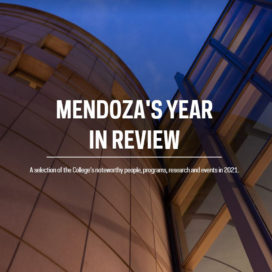Is it crime or is it art, or is it both?
Published: August 6, 2012 / Author: Ed Cohen

Grafitti writing, posters stapled to utility poles, “tagging” by gangs, murals painted on buildings (with permission and without) — is this vandalism, or is it art?
It depends on whom you ask.
The Artpost art gallery in South Bend, Ind., hosted a panel discussion on the issue August 3, 2012, featuring the chair of the University of Notre Dame’s marketing department, John Sherry, along with South Bend’s police chief, an attorney and administrative law judge for the city’s Department of Code Enforcement, and Ish Muhammad Nieves, an electrical engineer and accomplished street artist.
On a hot, muggy night, about two dozen attendees crowded into the front rooms of the un-air conditioned gallery, located in a historic brick house in downtown South Bend.
The police chief, Captain Darryl Boykins, and the attorney, Andre Gammage, who is a candidate for Saint Joseph County probate judge, both emphasized the legal and property-rights dimensions of the debate. If someone is expressing themselves on someone else’s fence, car or other personal property without permission and the owner complains, the perpetrators should expect to be punished, no matter how skillful their creation, they said. The same goes for public facilities such as bridges, they said.
Sherry, Notre Dame’s Raymond W. & Kenneth G. Herrick Professor of Marketing and department chair, was more sympathetic. He talked about his research on the street art movement in Northern and Western Europe and the United States. In 2010 he and three other marketing researchers published “Street Art, Sweet Art: Reclaiming the ‘Public’ in Public Place” in the Journal of Consumer Research.
Sherry said many of the street artists the marketing researchers met saw themselves as “creating community.” They intentionally posted their work in areas dominated by billboards and other advertising and in places with many government buildings, he said.
“They were looking to looking to create a space between the market and the state where you could gather and become a community,” he said.
The strategy seemed to work, he said, as people would frequently watch the work as it was going up and then talk about it in groups after it was finished. The discussions recalled the public squares and other outdoor forums of earlier times, he said.
Sherry, who is an anthropologist as well as a marketing professor, mentioned how the noted British street artist known as Banksy sometimes tries to draw a distinction between vandalism and what the artist terms “brandelism.” Sherry said Banksy is attempting to counteract the advertising messages that bombard people in public places.
As for the issue of property rights versus art, Sherry said: “Unfortunately, or fortunately, artists always challenged the boundaries of conventional morality, which includes legality, and stuff ends up in places where, I can’t say it ought not be but isn’t expected, and you have this clash between private property and public property. I’m not sure how to resolve that.”
The Artpost exhibition, “Post All Bills,” which includes examples of stenciling, tagging, wheatpasting, street posters, yarn bombing, sticker art and mural painting, continues through Aug. 26. The gallery is located at 216 W. Madison Street.
/news_and_events/news_articles/article/11625/is-it-crime-or-is-it-art-or-is-it-both




